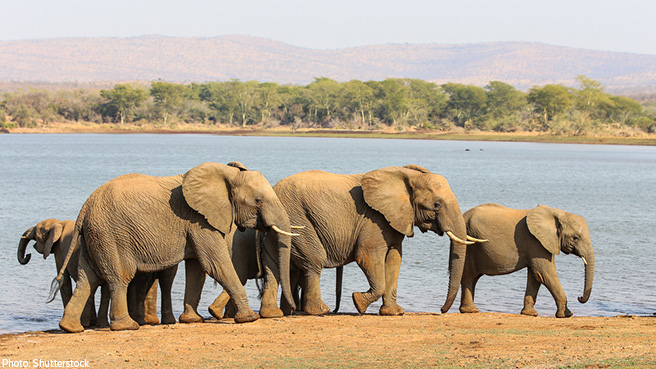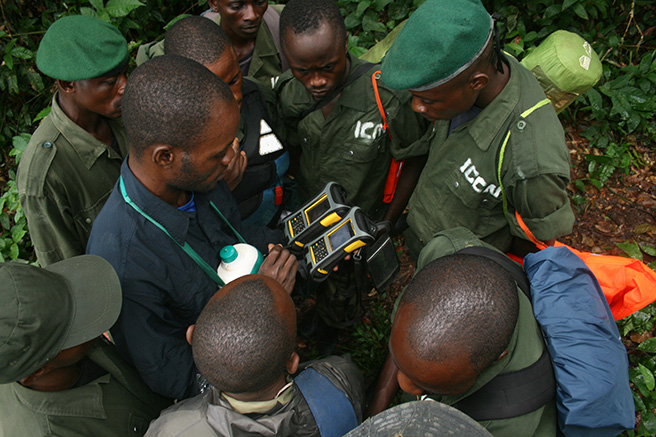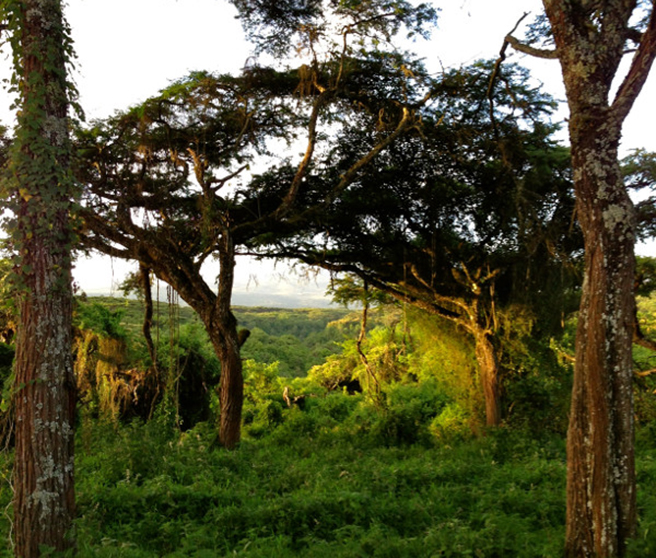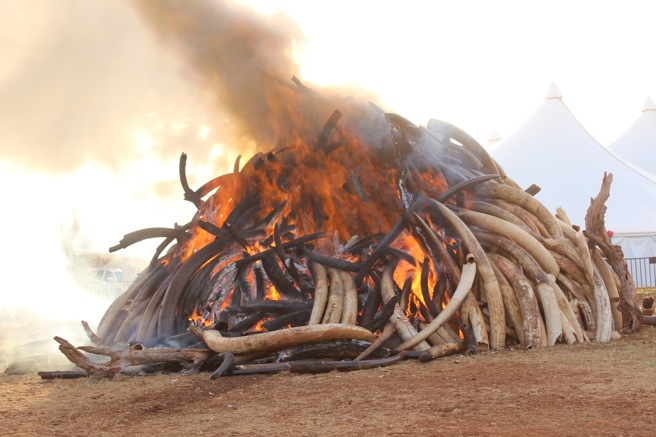Why Do Poachers Still Thrive? 5 Key Hurdles to Overcome to Stop the Slaughter

More than 40 years have passed since the Convention on International Trades in Endangered Species (CITES) became law. Today, 181 countries and international bodies are treaty members, but despite a worldwide commitment to end poaching of Africa’s iconic, threatened wildlife, many species still face an acute risk of extinction.
CITES experts found poaching reached record highs in 2012, and a 2014 analysis found that in just three years, poachers killed 100,000 African elephants.
These alarming statistics beg the question: how and why are poachers still so lethal?
Enforcement and Protection
Despite the global consensus condemning poaching, countries that are home to elephants, rhinos and other covered species play the most important role in protecting their fauna. They are, after all, the places where the endangered wildlife needs to thrive.
Consider Garamba National Park in the Democratic Republic of Congo (DRC), an ecological paradise and home to some of the continent’s most iconic species, including mountain gorillas, white rhinos and elephants. But at nearly 5,000 square kilometers, it’s a huge area for any country to patrol, let alone one that has been wracked by civil war and unrest for decades. Under-resourced and often going up against organized crime syndicates, Garamba Park officials often can’t keep up with poachers who use everything from chainsaws to grenades to hunt down elephants.

Eco guards receive training at AWF's Iyondji Community Bonobo Reserve in the DRC. Photo credit: Nakedi Maputla
Given their tough circumstances, it’s not surprising that 68 elephants were killed in just two months at the park last summer. The slaughter was at such a large scale that the park director said in a statement that, “The park is under attack on all fronts.”
AWF works in communities to recruit and train rangers, and equip them with technology to better track wildlife movements and provide more targeted protection. International bodies, including the United States, have provided troop support to beef up forces. Still, for the local rangers trying to protect their park, the mission is daunting.
Lack of Economic Opportunity
While it’s tempting to see poachers as purely evil, it’s critical to understand the context in which poaching flourishes. Sure, the cold-hearted are among the perpetrators. But for many, poaching is the best of a slate of bad options for supporting themselves and their families.
Many countries that are home to elephants, rhinos and other valuable wildlife are desperately poor. The per capita gross national product in the DRC is just $430, compared to $53,470 in the United States. A single pound of ivory can fetch $1,500 on the black market—more than three times the typical DRC annual income. The tusks of a single elephant can weigh up to 250 pounds, meaning the killing of just one elephant is a life-changing windfall for a family.

AWF's REDD+ projects aim to reduce community dependence on consumptive forestry activities by providing new and/or improved sources of livelihood. Photo credit: Amy Rizzotto
To stop poaching, we have to change that calculus. The international community has already made strides by banning the sale of ivory. But to make a dent in the black market, potential poachers need other ways to earn a living and support their families.
AWF and other groups work to help communities realize the economic benefits of conservation. Many areas participate in Reducing Emissions from Deforestation and Forest Degradation (REDD+) programs, in which companies pay communities to preserve and protect their forests to offset corporate carbon emissions. As of September 2014, the UN-REDD Programme had enlisted 53 partner countries covering more than one-third of the world’s forests and more than $215 million was contributed to participating countries.
Trade Ban Enforcement
Any student or practitioner of public policy will tell you that implementation is everything. While the international community has made important commitments to conservation of endangered wildlife through trade bans, too often reality falls short of the promise. Between 2010 and 2014, the price of ivory in China skyrocketed from $750 to $2,100 per pound, fueling poaching activities, particularly in Nigeria and Angola, according to Time magazine.
A damning report from the Environmental Investigation Agency accused Chinese officials of fueling the ivory trade in their country, where the material has long been used in carvings and as a symbol of wealth and prosperity. So long as countries undermine their international commitments to wildlife protection, poaching will continue to thrive.

15 tonnes of ivory were destroyed in Kenya’s Nairobi National Park in March, 2015. Photo credit: Peter Chira.
Ivory Stockpile Sales
In 2013, the United States crushed 5.4 tons of ivory in its possession, the equivalent of 1,000 elephants. The logic behind the action was simple: the availability of raw and carved ivory drives demand for the product, which then encourages poachers to continue slaughtering elephants for profit.
AWF encourages all countries with ivory stockpiles to follow this example. While many countries have signed on to the international ivory ban, many have the right to exercise the option to sell their existing stockpiles. Four African countries in 2014 commendably declined to exercise the option, but others have flooded the market with ivory, a move that conservationists worry undermines efforts to end the ivory trade.
Public Education
Underlying all poaching is the demand for animal products. Reduce the demand for ivory, horns, hides and other products, and you cut the heart out of the poaching industry. For many products, demand is driven by traditions, many of which don’t stand up to the scrutiny of science and the realities of the modern world.
Zebras are hunted for their distinctive skin. Ivory is a favorite material for carved statues, jewelry and other trinkets. Rhino horns can fetch up to $300,000 on the black market because of their believed (but false) medicinal properties as hangover and cancer cures.
AWF and its partner WildAid are dedicated to educating people about the impact of poaching. Their “Say No” public awareness campaign targets audiences across Asia through videos and billboards, correcting misinformation in order to reduce demand and save countless animals from a grisly fate.
Chinese film icon Li Bingbing transforms into an elephant in this short film urging viewers to consider the realities of elephant poaching, part of AWF's "Say No" campaign with WildAid.
The world has taken many great strides to protect dwindling wildlife populations and save species on the brink of extinction, but poaching is a stubborn problem to root out. Recent actions do provide some hope. President Obama’s executive order targeting wildlife trafficking has raised awareness and targeted enforcement of illegal markets. A new strategy by a coalition of African countries could result in a coordinated, cross-border effort.
Changing the system to address the ongoing problems isn’t simple, but with a collaborative, supportive and forward-thinking international strategy to educate people about the consequences of poaching, to stop trade in wildlife parts and to provide a better life for people in poverty-stricken countries, we can save Africa’s great fauna for generations to come.
